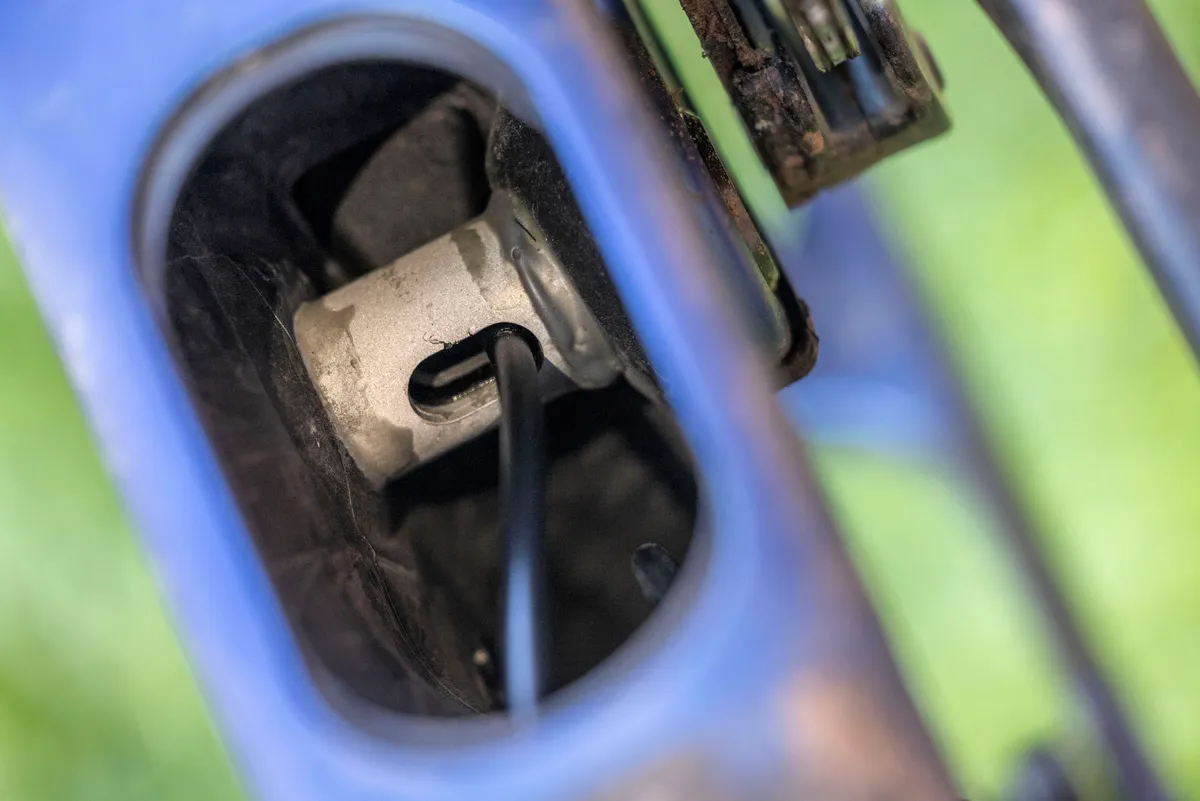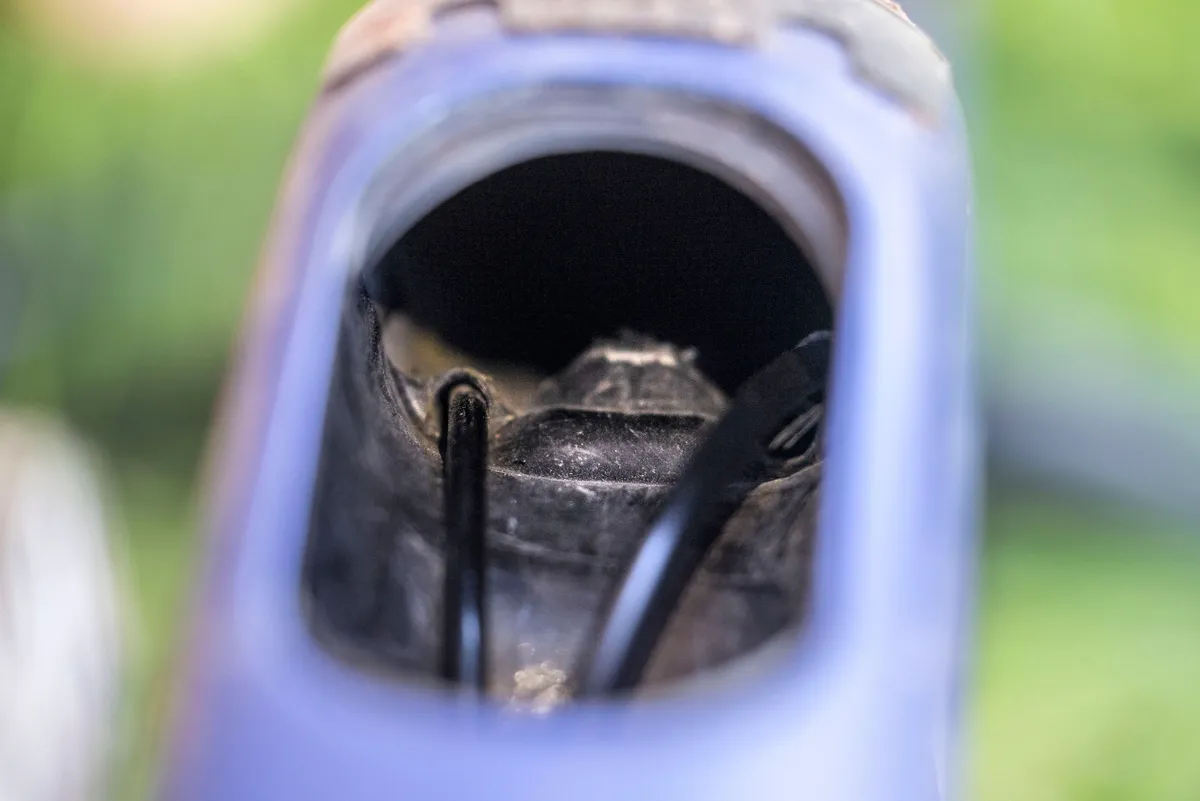Merida's refreshed One Sixty enduro bike is perhaps its most radical yet, with a fresh suspension layout and geometry that screams progressivity.
The 29er bike has 162mm of travel at the back, with a 170mm fork. However, if you run the One Sixty with a 27.5in rear wheel (the smallest three sizes come with this setup), the travel increases to 171mm, and the geometry flip chip retains the same geometry.
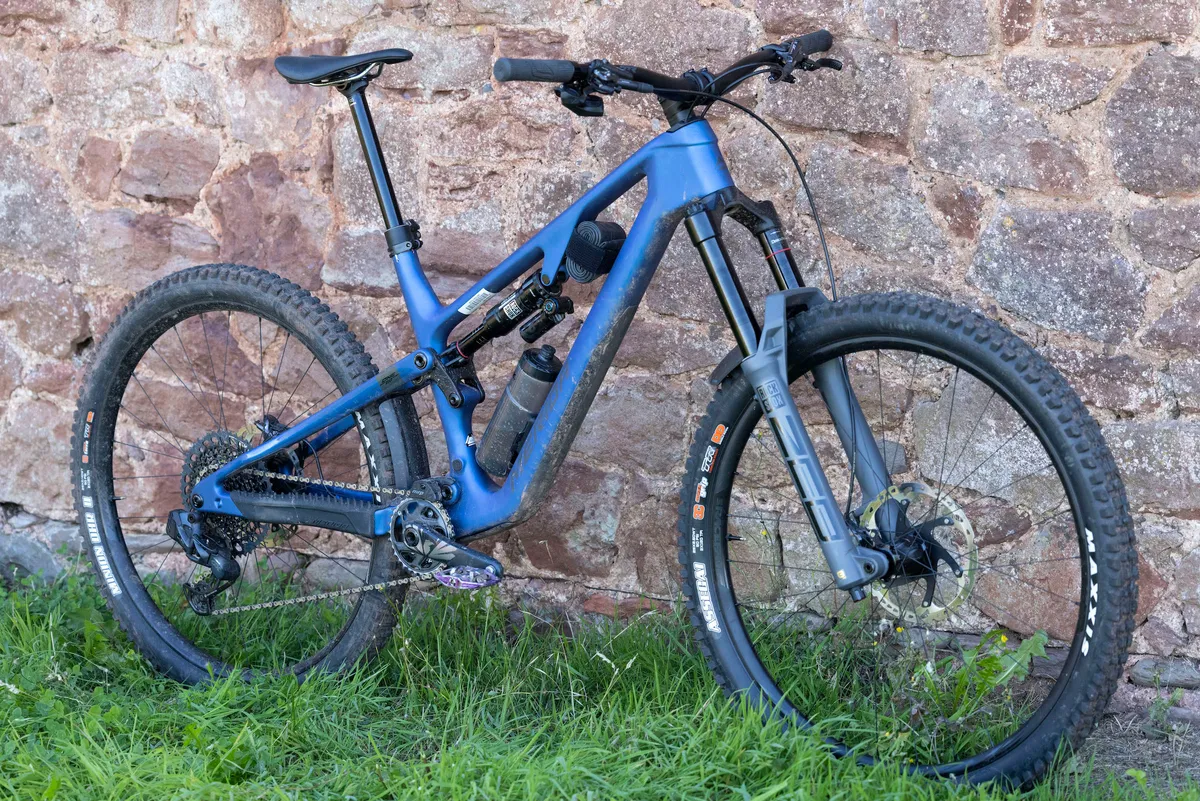
The 8000 model sits second in the range, with the 10K model featuring RockShox's Flight Attendant suspension, while an alloy frameset offers more pocket-friendly options.
So confident is Merida of its bike's construction, that its 5-year warranty covers bike park and enduro racing use.
The bike shares a frameset with the shorter-travel One Forty, and can be run as a mullet bike if you wish.
This first ride review concentrates on the bike being ridden as a 29er, however the embedded video includes some ride impressions of the bike with a smaller 27.5in wheel fitted, as well as my experience of riding the One Forty.
I tested the bike on relatively unfamiliar trails at its launch. As ever, a full review will follow once I've spent time on the bike on my local tracks.
Merida One Sixty 8000 frame details
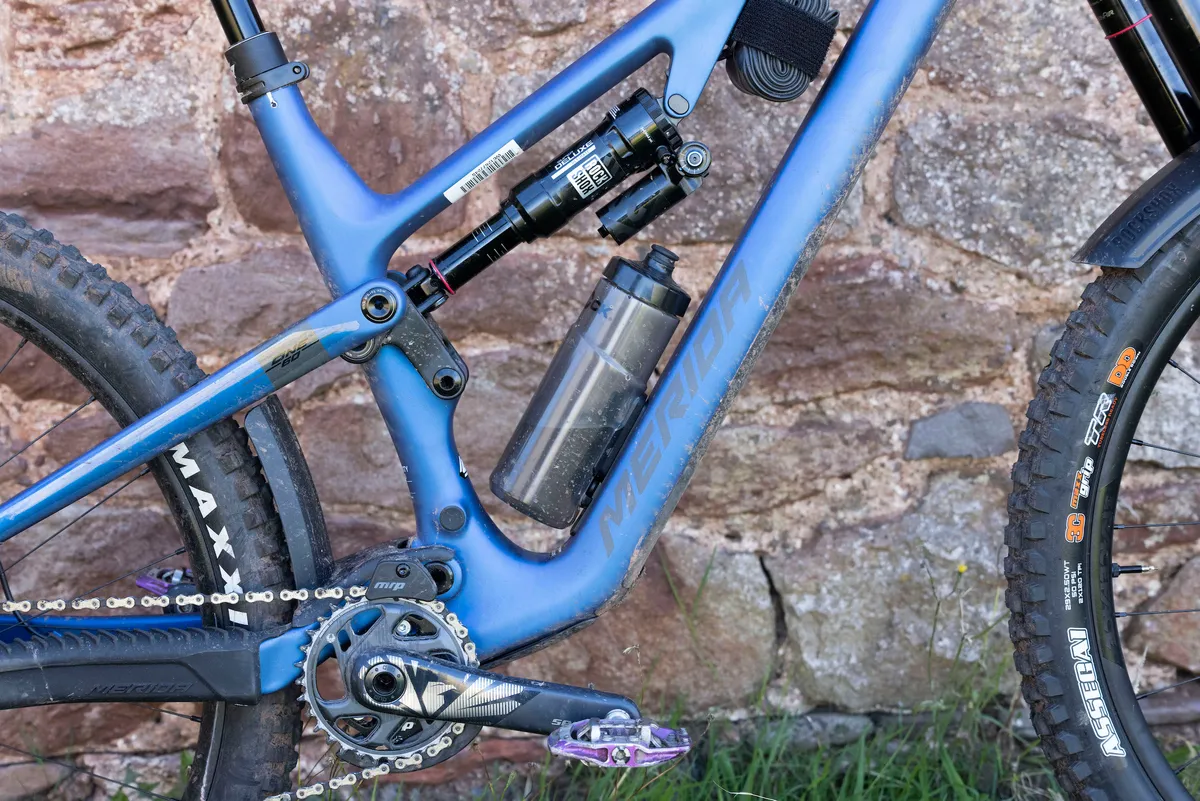
Merida says the frame has been designed from the ground up, with the enduro racer in mind, claiming it's the most uncompromising, adjustable and flat-out long-travel bike it has made.
The frame is built from carbon fibre, with a flexstay rear-suspension system. Flex is built into the symmetrical rear triangle, replacing a rear pivot, which Merida claims is more reliable and needs less maintenance than a pivot-based system.
The chainstays then drive a rocker, in which the 29in/27.5in flip chip is located.
The smaller-sized bikes (XShort, Short, Mid) come as a mullet, while the Long and XLong are shipped as 29ers. I predominately rode the Long as a 29er for the purpose of this test.
Merida One Sixty 8000 frame features
Merida has squeezed plenty of features into the new frame.
Carrying capacity seems to be the current 'big thing' when it comes to enduro bikes and Merida doesn't let the side down here.
The down tube of the carbon frame features a neatly integrated Fidlock bottle mount, with room for a large bottle in all sizes, while up by the top shock mount, there's a pair of bosses for a tool or tube caddy.
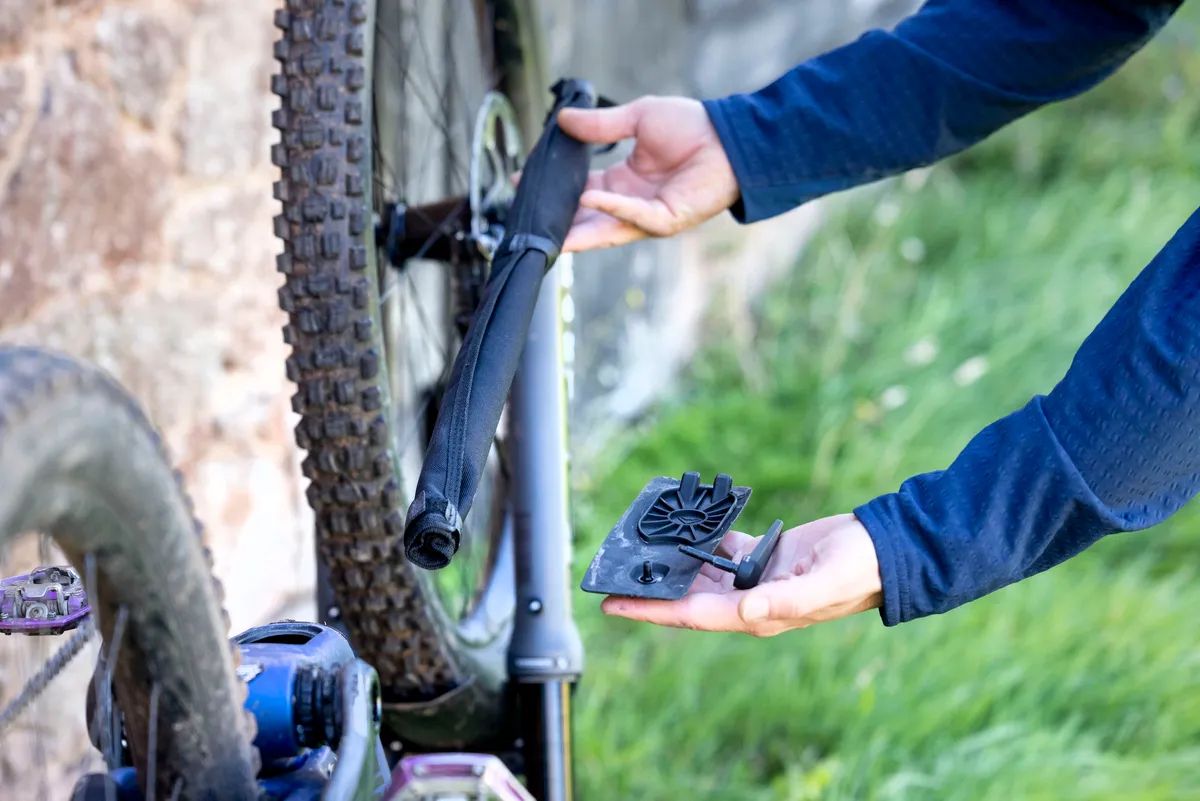
Underneath the BB is Merida's 'Service Port'. This door, accessed via a 4mm hex-headed bolt (a 4/6/T30 combined key is located in the rear-axle lever), gives access to the internal cable routing, but also a long sleeve, designed to hold emergency equipment such as a pump, repair kit and spare universal derailleur hanger.
Unlike the doors found on Specialized and Trek bikes, it's not really intended for day-to-day storage of food and jackets, but more as a way to carry the essentials to get you out of a fix.
Externally, there's plenty of rubberised protection for the rear triangle, and a short integrated fender to keep mud and debris from the main pivot.
An aftermarket longer fender will be offered to give riders protection from mud. It'll bolt into pre-made holes on the seatstay bridge and in the seatstays, to avoid rattles and the use of zip-ties.
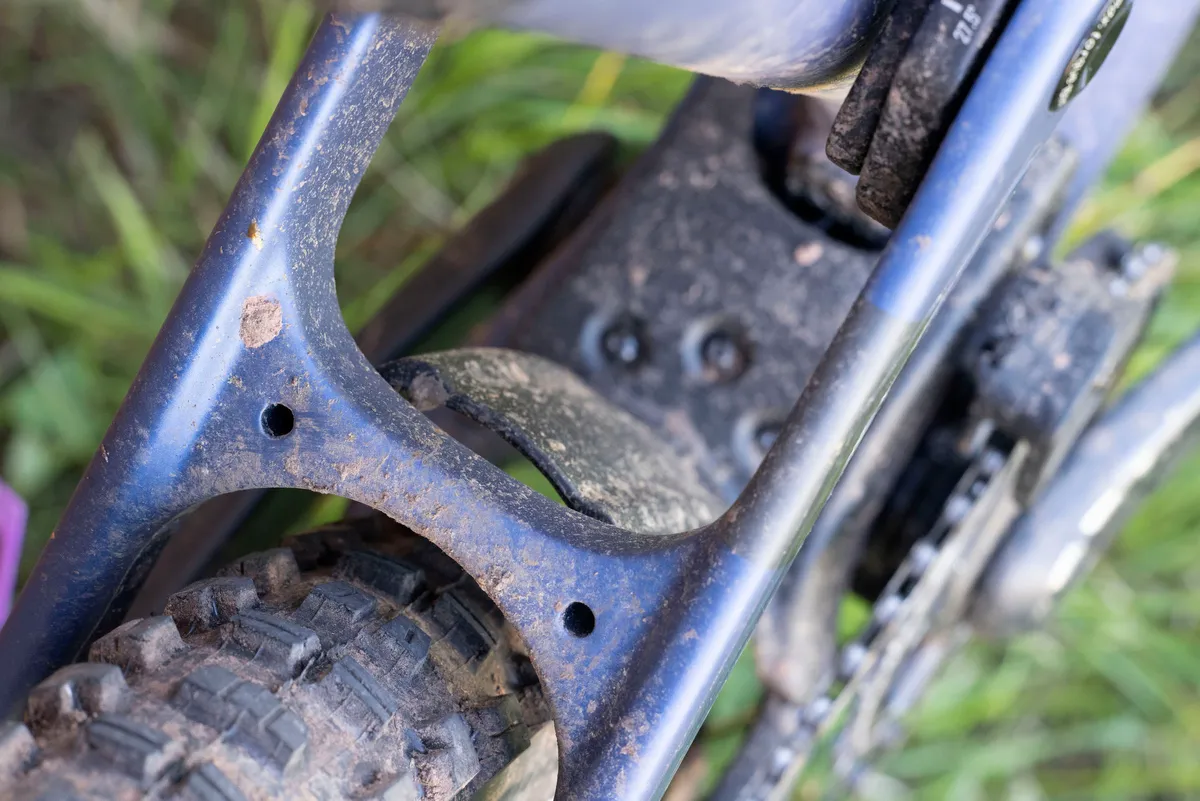
Internally, cables are routed into the frame via the headset. This gives the bike a neater look, but may compromise the ease of maintenance. Cables and hoses run through dedicated internal sleeves, however, for easy routing.
The cables and hoses also run through the centre of the main pivot. This reduces the amount they're pulled upon when the suspension compresses.
Merida One Sixty 8000 suspension details
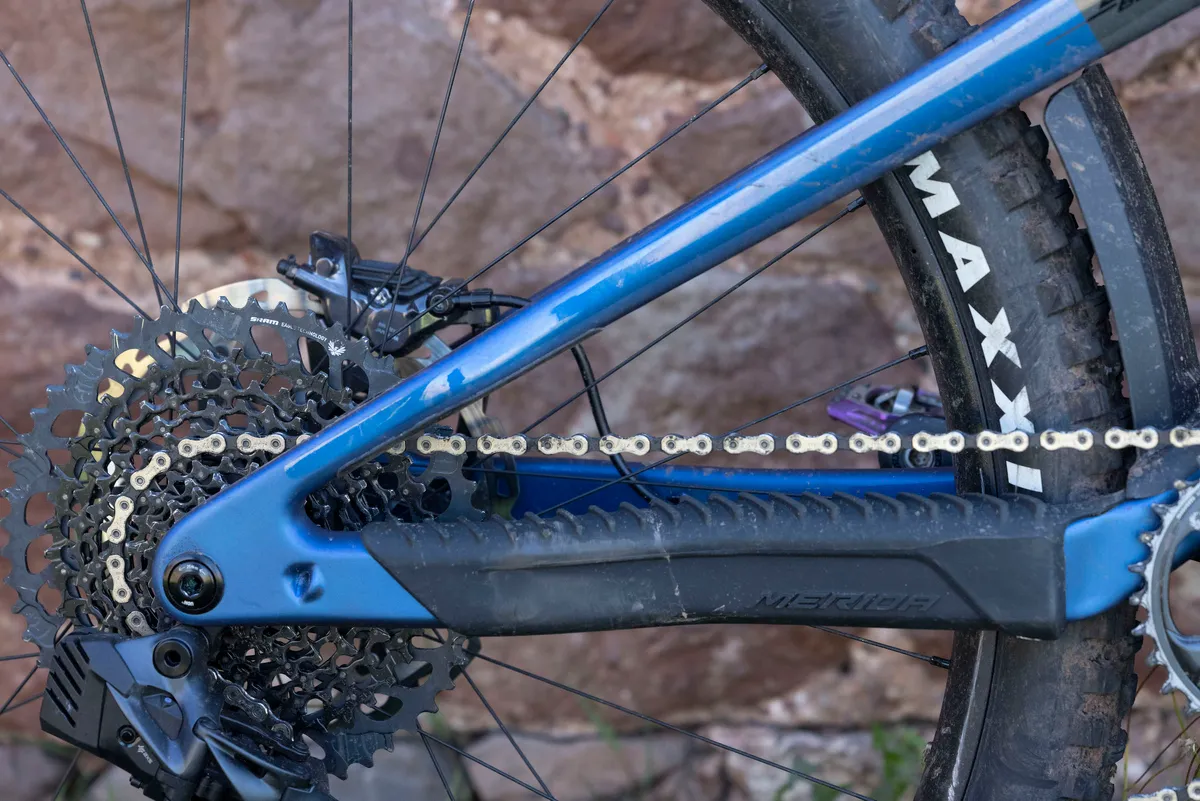
Merida turns to flexstays for its rear suspension. Through the stroke, the chain and seatstays flex, mimicking the function of a rear pivot.
Merida says it has tested the stays rigorously to ensure fatigue doesn't take its toll, and the degree of flex is less than that found on the XC-focused Ninety-Six race bikes.
The flip chip in the rocker enables riders to swap between wheel sizes.
Merida alters the leverage ratios for the suspension between each size, with larger bikes having a more progressive stroke (from 6 per cent on the smallest bike to 14 per cent for the larger sizes). My Long bike has just under 13 per cent progression.
The reason is that, in general, larger bikes will be ridden by heavier riders, who benefit from a more progressive stroke. Or, they're ridden by more aggressive riders who may have 'sized-up' to get a longer-reach bike. Again, these riders benefit from more progression.
Merida has built the bike to work with both air and coil shocks. My test bike came with a RockShox Super Deluxe Ultimate air shock.
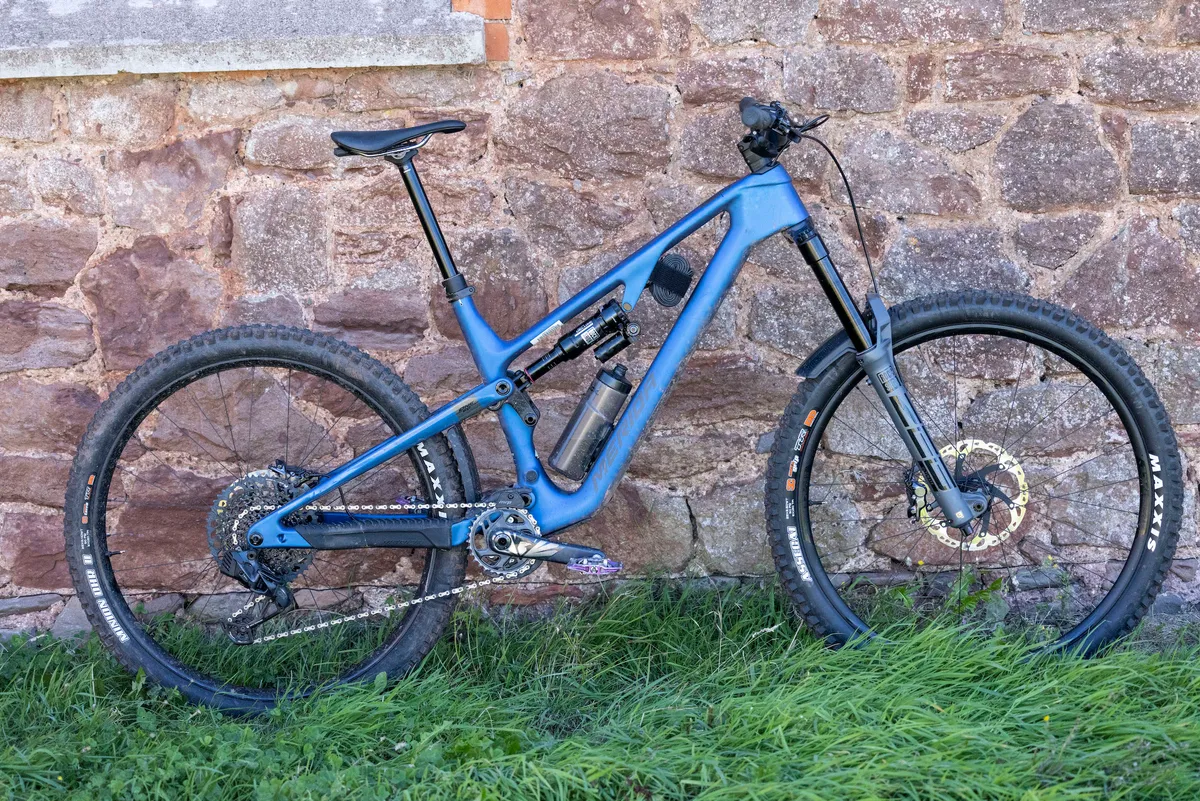
Other alterations to the suspension include adjusting the anti-squat to give reasonable pedalling performance in the early to early-mid stroke, before it falls below 100 per cent in the mid-to-late stroke, giving improved comfort and reduced pedal feedback.
Anti-rise has also been adjusted to keep the bike stable under braking while in the early part of the stroke (such as fast, smooth trails or on steep sections), while reducing deeper into the stroke, to aid braking traction in rougher terrain.
Merida One Sixty 8000 geometry
Despite offering two wheelsize options, Merida has managed to maintain relatively static geometries between the mullet and 29er bikes, save for reach and stack.
Reaches are generous, ranging form 415mm to a monstrous 525mm. Stack heights don't grow at the same rate, as riders sizing up can find front-end height becomes an issue. As such, Merida suggests taller riders use more stem spacers, and the two larger-sized bikes come with a 30mm, rather than 18mm-rise bar.
Overall, the geometry reflects the latest trends in long, low and slack shapes.
| FS Frame Size | X Short | Short | Mid | Long | X Long |
|---|---|---|---|---|---|
| Tyre size (in) | 29/27.5 | 29/27.5 | 29/27.5 | 29/29 | 29/29 |
| Seat tube (mm) | 400 | 410 | 425 | 445 | 470 |
| Top tube (mm) | 535 | 562 | 589 | 621 | 653 |
| Chainstay length (mm) | 434 | 434 | 434 | 438 | 438 |
| Head tube angle (degrees) | 64 | 64 | 64 | 64 | 64 |
| Seat tube angle (degrees) | 79 | 79 | 79 | 79 | 79 |
| Bottom bracket drop (mm) | 7 | 7 | 7 | 27.5 | 27.5 |
| Head tube (mm) | 95 | 95 | 95 | 105 | 120 |
| Fork length (mm) | 581 | 581 | 581 | 581 | 581 |
| Reach (mm) | 415 | 442 | 470 | 498 | 525 |
| Stack (mm) | 615 | 615 | 615 | 625 | 638 |
| Wheelbase (mm) | 1,188 | 1,215 | 1,242 | 1,275 | 1,308 |
| Standover height (mm) | 727 | 730 | 737 | 736 | 776 |
Merida One Sixty 8000 specification details
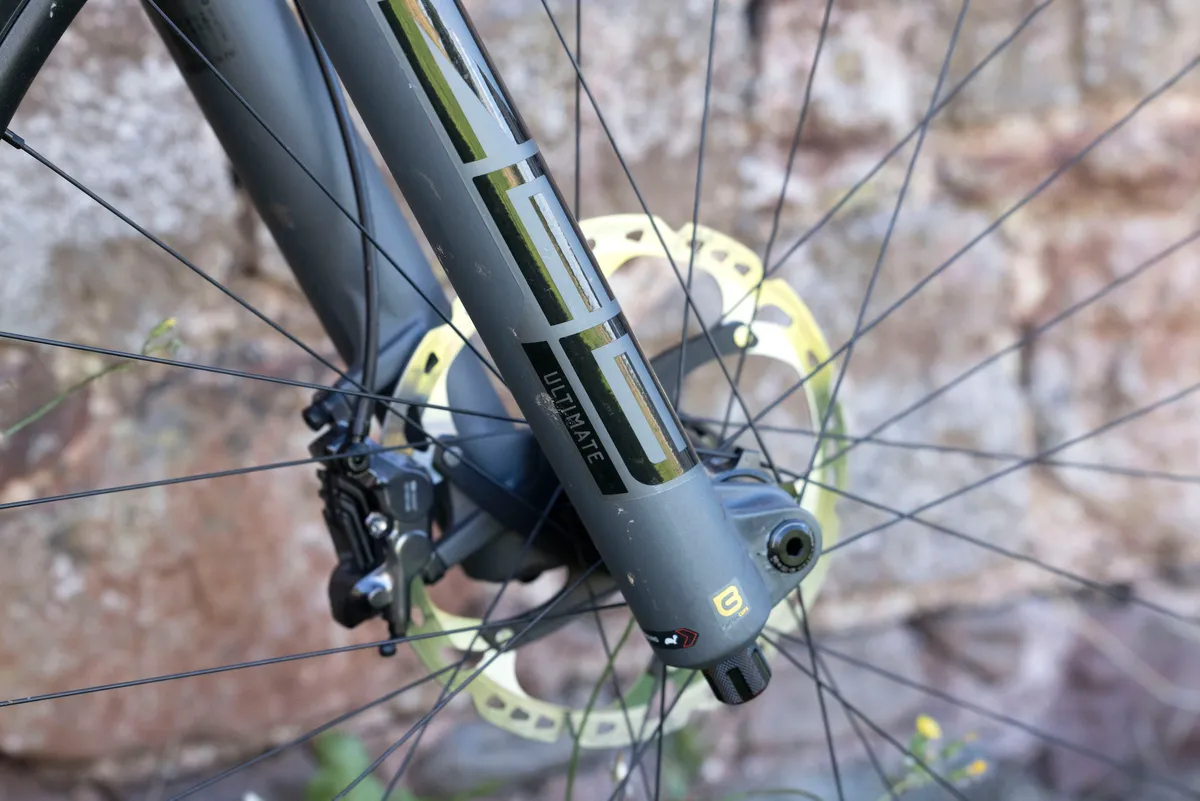
The 8000-level bike sits on the second rung of Merida's range. Consequently, the components all come from the higher reaches of their respective ranges too, though not quite the top.
Suspension is supplied by RockShox, with Ultimate-level ZEB forks and Super Deluxe piggyback shocks. These offer plenty of usable damping adjustments, which I explored a little while testing the bike.
The drivetrain comes from SRAM's wireless GX AXS stable, while Shimano provides XT brakes, with 4-piston calipers.Race Face's Turbine R30 wheels have a broad rim that offers plenty of volume to the Maxxis tyres. Both ends get proper triple-compound, DoubleDown-cased rubber – an Assegai at the front and Minion DHRII at the back.
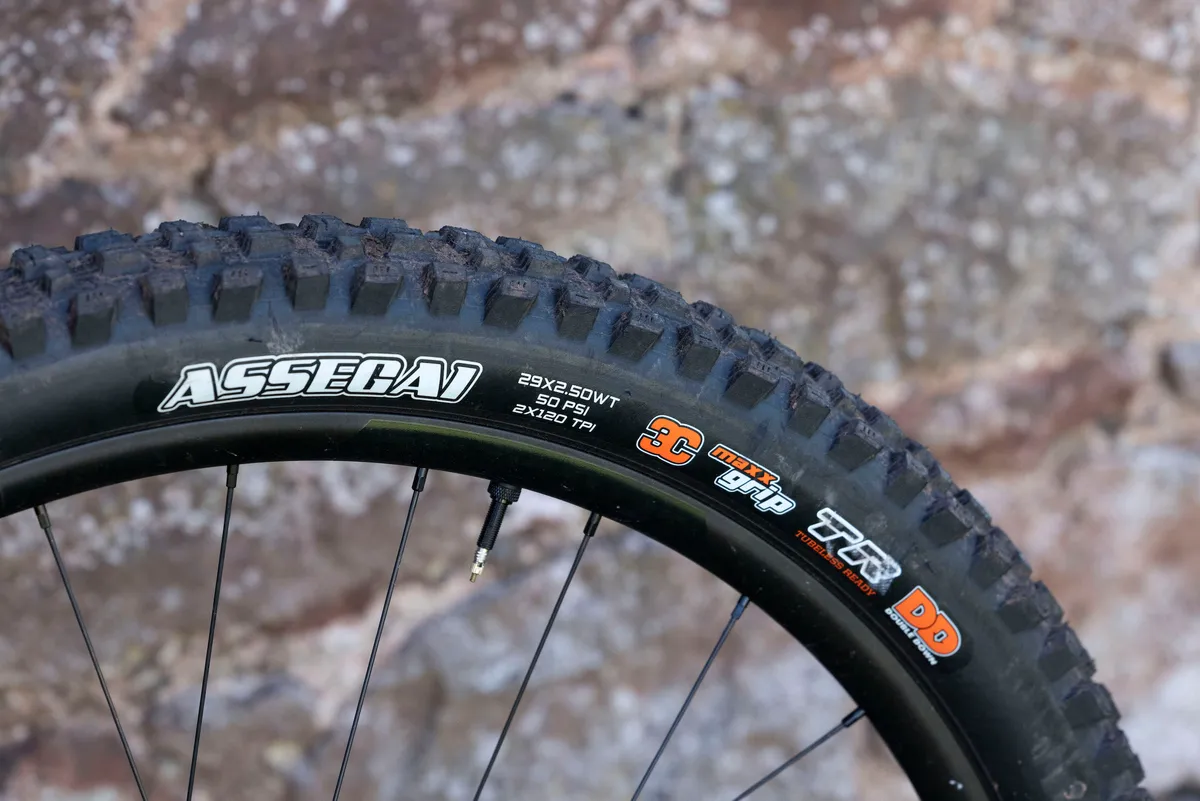
Finishing kit comes largely from Merida.
This includes the Team TR dropper post. Its drop is adjustable via a hex bolt and cable-adjustment system, between 30mm and 230mm. The length of the post means most riders should be able to get the non-moving outer part of the post fully inserted into the frame.
I didn't have the leg length to run the full 230mm of drop, but appreciated the ability to get the saddle as low as it could go.
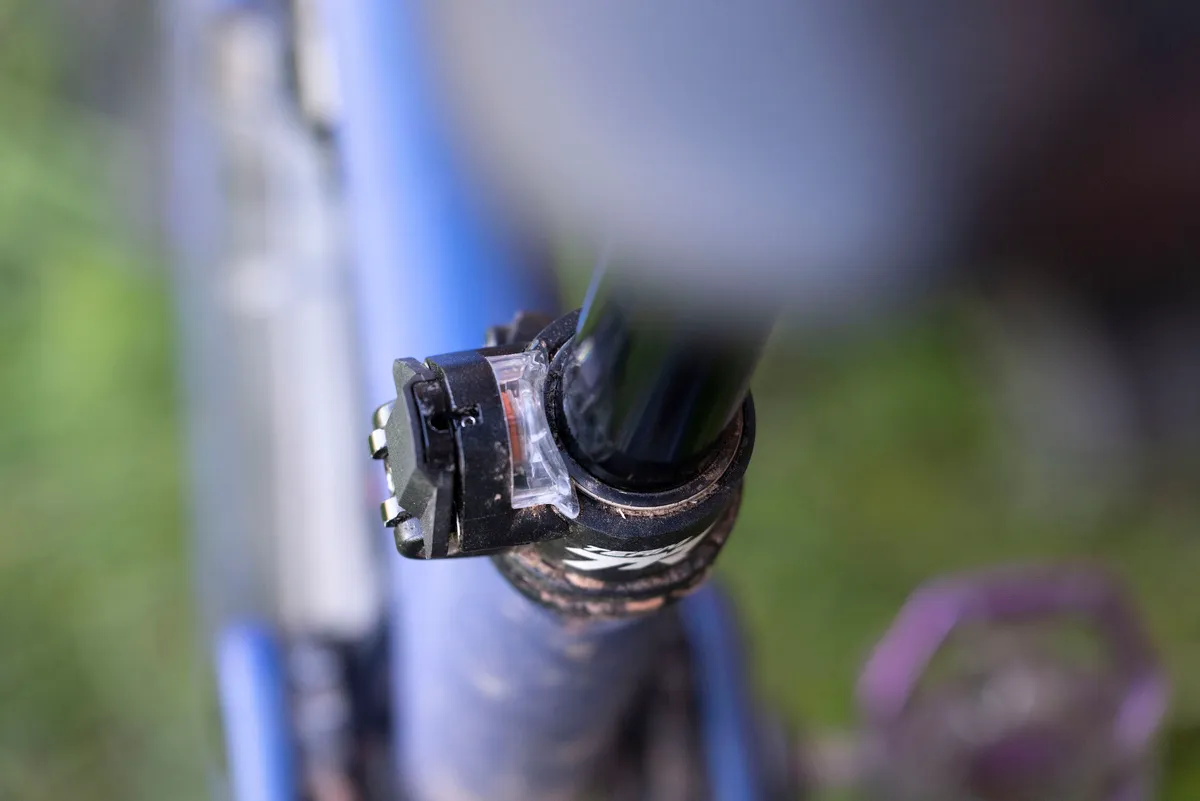
The stack height is a touch higher than some droppers, though, and the travel-adjustment mechanism isn't as slick as that found on Canyon's latest bikes.
Merida One Sixty 8000 first ride impressions
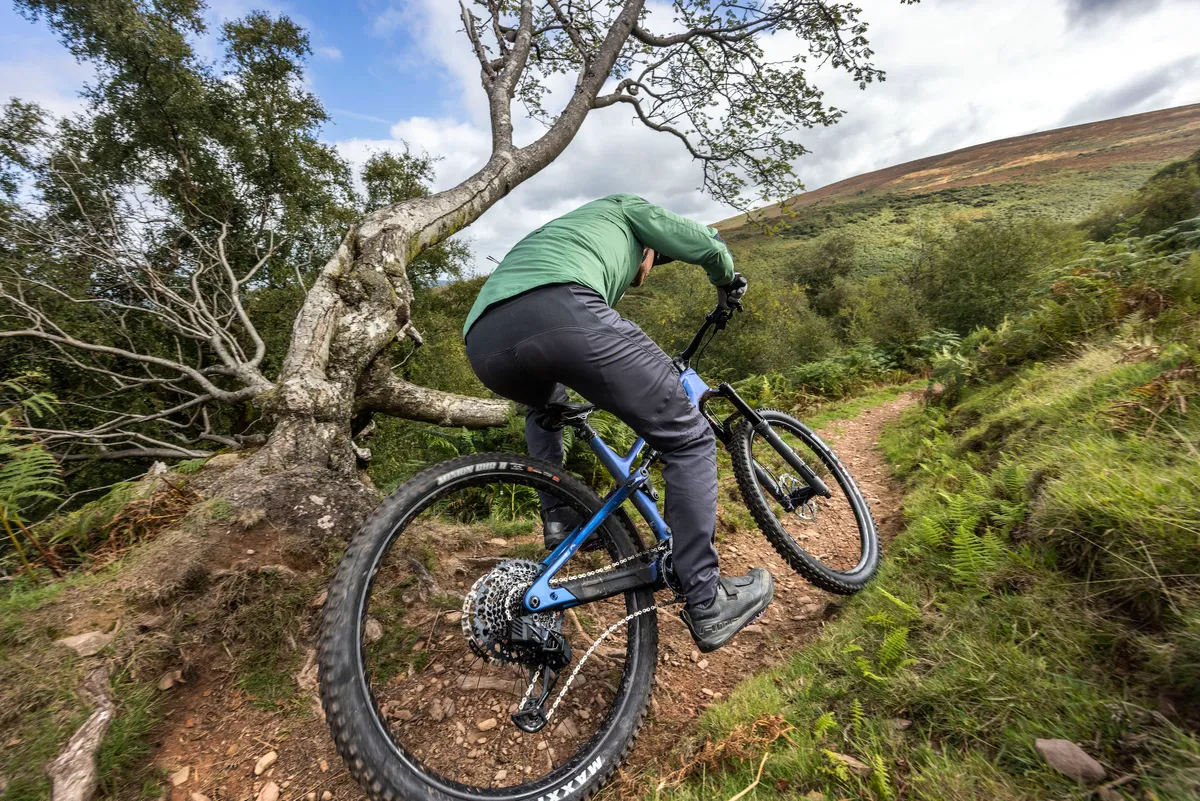
I rode the 29er version of the bike over a couple of days, including during the first day of The Ex Enduro. That said, during the racing day I was concentrating more on not crashing than how the bike felt. So, look out for a more complete review in the coming months.
Setting the bike up was pretty easy, with RockShox's latest dampers simple and intuitive to get feeling good.
I ended up running the shock's compression damping 1 click from closed (4 from open). Merida's engineers say they tuned the bike's suspension around the middle position. Given the 'pedally' nature of The Ex's tracks, I was quite happy to add that extra click to give a little more pedalling support.
On rougher tracks, or ones where there was less pedalling, I'd have happily opened up the shock by a click.
I ran the shock with 29 per cent sag, and around 20 to 25 per cent sag on the fork.
Merida One Sixty 8000 climbing impressions
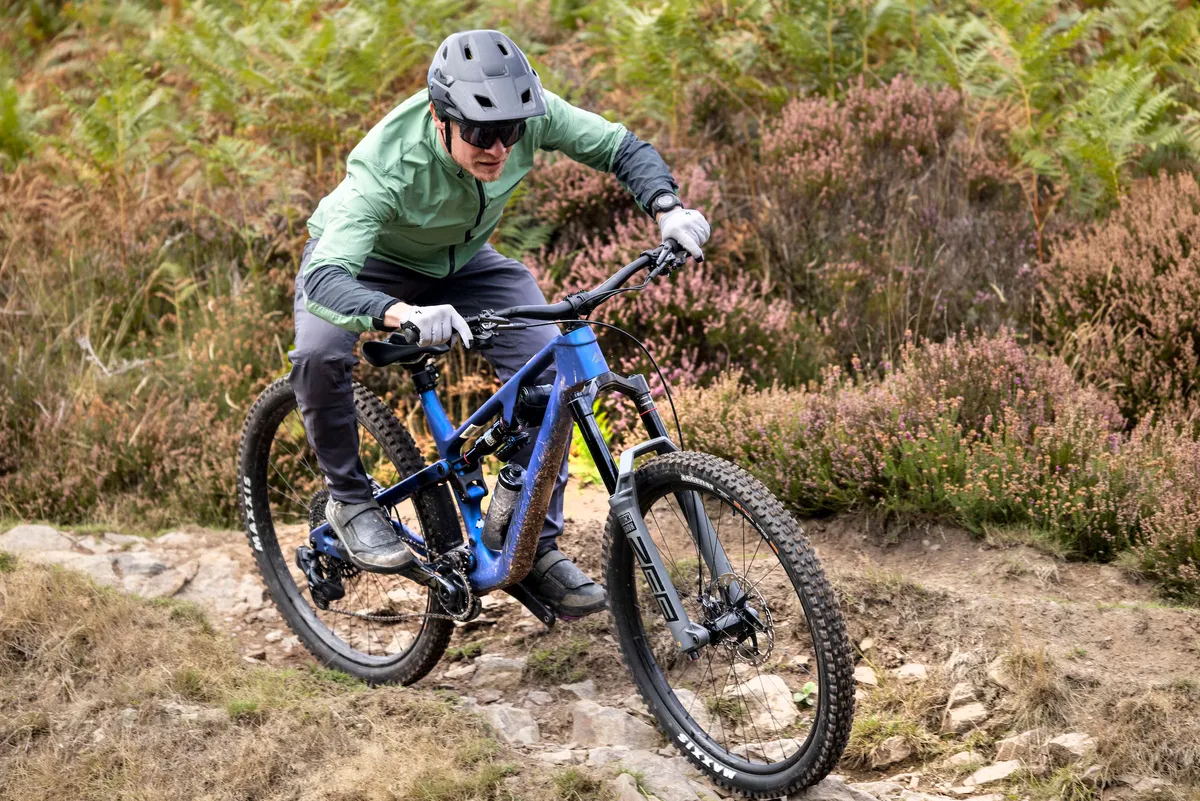
With its steep (79-degree) seat tube angle and moderately generous top tube length, the One Sixty proved comfortable on long pedals. It doesn't feel cramped when sat, and the position of the hips over the BB is comfortable.
The anti-squat does a good job of keeping the suspension static when pedalling normally. It's not quite as high as you'd find on a trail bike, for example, but on seated off-road climbs I didn't feel the need to reach for the shock's lockout lever.
When stood up, body weight shifts during the pedalling stroke do push the shock past the sag point and towards the area where anti-squat is below 100 per cent. Here, some pedal bob was noticed, though it wasn't unexpected.
It was most noticeable when sprinting uphill. If you're used to a shorter-travel trail bike, you might find the One Sixty a little less responsive to pedal inputs than you're used to. However, compared to longer-travel, coil-shocked, high-pivot bikes such as the Norco Shore, the One Sixty should feel peppy uphill.Throughout the climbs I did on the bike, traction at the rear wheel was good. The suspension has enough give in it to help the rear tyre eke out grip on rocks and lumps of dirt.
With both wheels being wrapped in DoubleDown tyres, and with the front featuring the sticky MaxxGrip compound rubber, on-road climbing performance won't set anything alight. The tyres are heavy, and the rubber slow-rolling.
The lockout lever of the shock is easily in reach, though the lever itself is pretty small, making it a touch harder to find on the shock body.
Merida One Sixty 8000 descending impressions
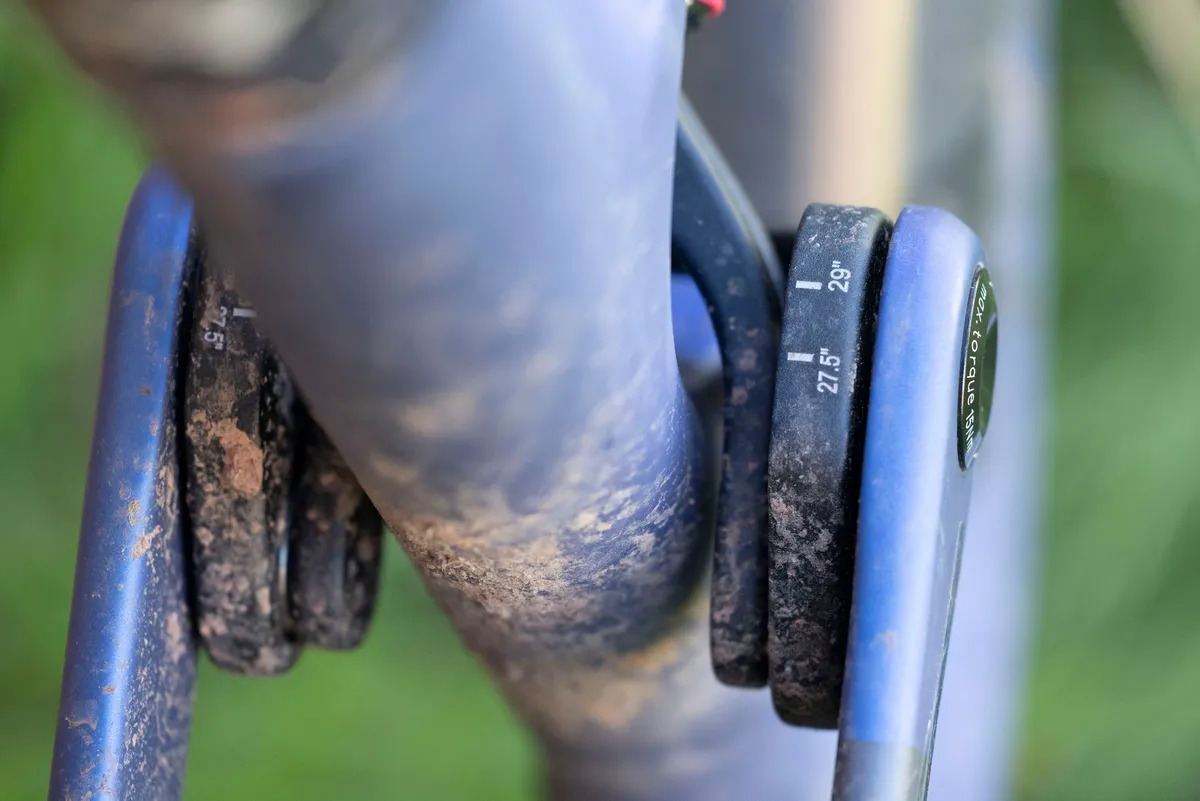
With a long reach, relatively slack front end, supple suspension and stout, well-damped tyres, the One Sixty is no slouch on the descents.
At the back, the suspension and chassis combine to give a smooth ride that easily copes with small chatter and bigger hits alike. Despite racing (and thus riding without finesse), I rarely noticed the bike reach the end of its travel, even if the O-ring on the shock's stanchion showed that I did.
This suggests the 13 per cent progression and the natural ramp-up of the shock combined to give a controlled and comfortable end-of-stroke feel.In its mid-stroke, the One Sixty feels composed. There's a little feedback through the pedals, but not so much that flat-pedal riders will need to concentrate heavily on dropping their heels to keep their feet planted.
The bike seems to sit happily in the middle portion of its suspension when riding, giving a supple feel over rocks and roots, before dipping into that late stroke only when needed.
This compliance meant that during sprints, in racing, the bike didn't feel the most pert, with a bit more wallow than I'm used to. However, I mostly ride shorter-travel trail bikes.
As such, I rode with an extra click of compression damping on the shock, compared to what the bike had been tuned with.
This helped keep the shock a little more stable under pedalling loads. Running less compression damping on more descent-focused trails, or over harsher terrain, would be more than acceptable.
Up front, the ZEB impressed. The chassis is stiff, allowing me to confidently push the bike as hard as I could through corners, while deflection through rocks and roots felt minimal. I didn't experience any harshness with this new fork, despite reports of some forks needing more time to bed in than usual.
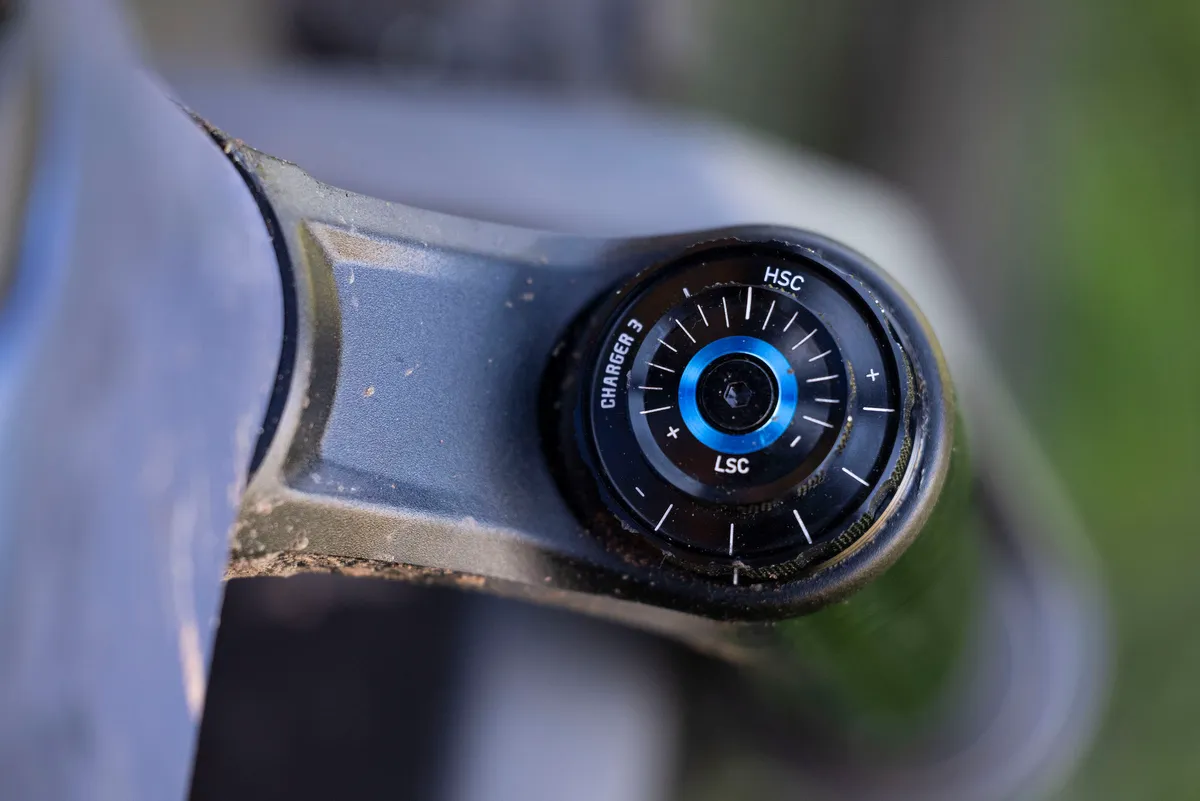
I ran the fork fairly, but not completely, open. Given that I run most forks fully open, I was happy to have damping options both faster and slower than I'd usually run.
This is all helped by the tyres. Merida has done a great job speccing heavy, slow-rolling tyres here. It simply means the rubber better sticks to the ground, doesn't get pinged around, and gives you the confidence to press on over rocks and roots, even with fairly low tyre pressures.
Where the One Sixty really impressed was in chattery or off-camber corners. Grip felt much better than I'd expect it to. This is partly down to the tyres, but also perhaps because of a little lateral frame flex, between the front and rear ends. This helps the bike mould better to the ground.
The pay-off, though, is that some might find this flex mutes the feeling of the bike when sprinting, robbing a little power.
However, more testing is required before I can commit fully to any frame flex taking the credit for its cornering performance.
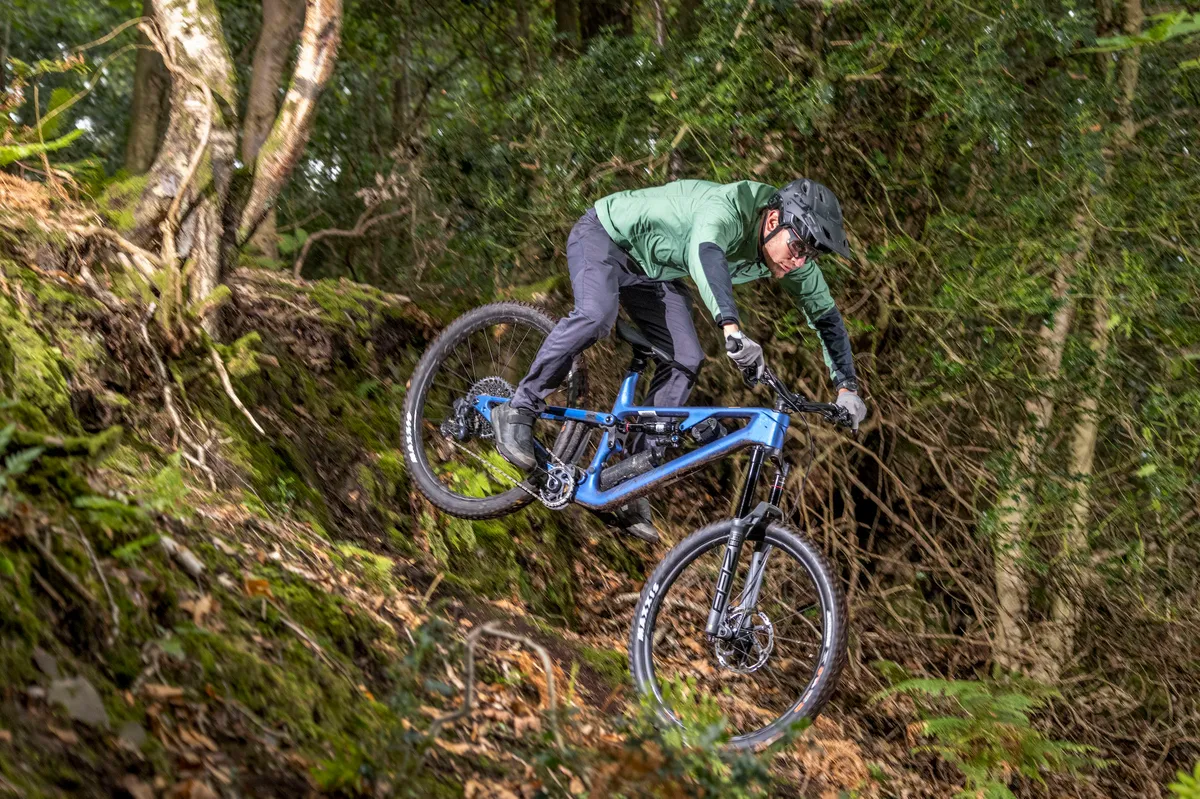
Certainly, the shape of the bike helps, too. The 64-degree head angle is pretty slack (though we're seeing more and more bikes with slacker, 63-degree head angles), and the BB moderately low too.
In terms of geometry, there's little to complain about. The reach is generous, and the seat tube short enough that I was able to benefit from around 200mm of drop from the dropper.
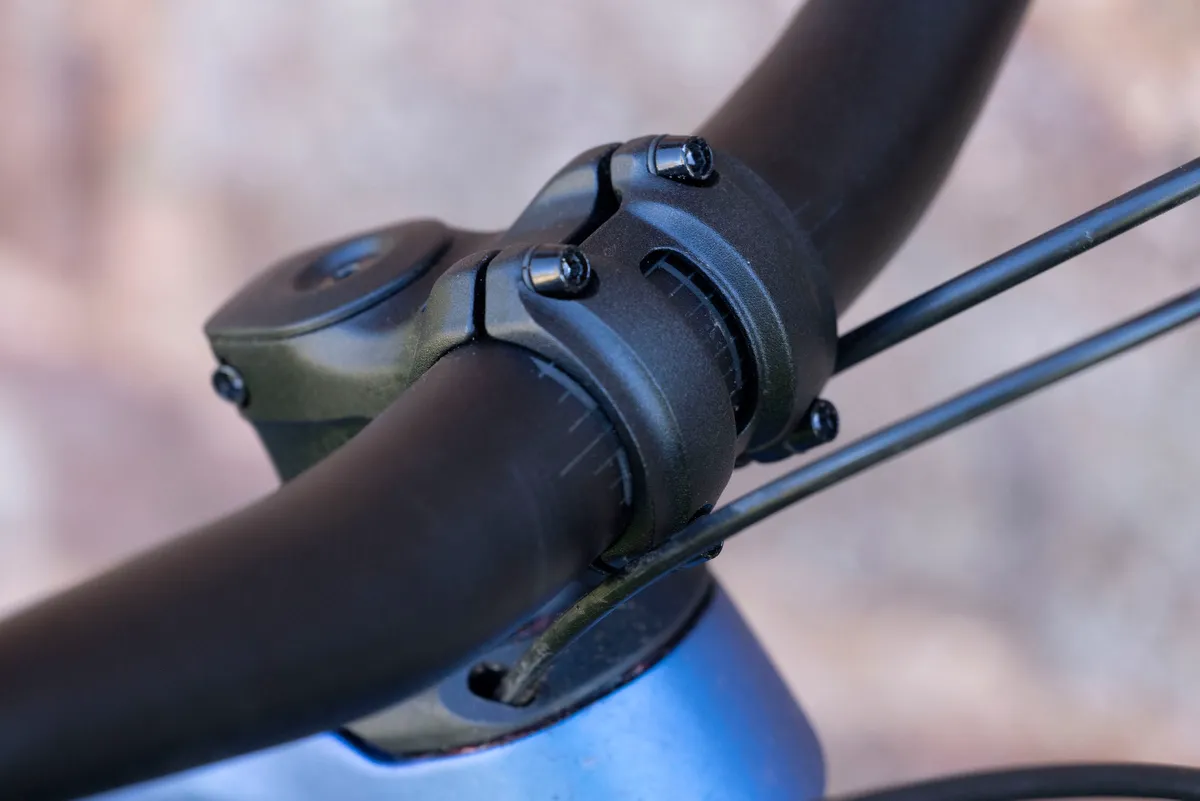
In terms of kit, I was happy to see alloy wheels and cockpit fitted. Many higher-end bikes are specced with carbon bars and hoops. Often, this contributes to a harsher front end, leading to arm pump.
The stages at The Ex might not be that long, but I didn't suffer from any arm pump or hand pain – something I'm relatively prone to.
Product
| Brand | merida |
| Price | 8460.00 EUR,6600.00 GBP |
| Weight | 15.3000, KILOGRAM (Long) - Claimed |
Features
| Fork | RockShox ZEB Ultimate |
| br_stem | MERIDA EXPERT eTRII |
| br_chain | SRAM GX |
| br_frame | ONE-SIXTY CF4 III |
| Tyres | Maxxis Assegai / Maxxis DHRII, 29x2.5" TR DD 3C MaxxGrip, 27.5x2.4" XS/S/M 29x2.4" L/XL, TR DD 3C MaxxTerra |
| br_brakes | Shimano XT |
| br_cranks | SRAM GX |
| br_saddle | MERIDA EXPERT SL |
| br_wheels | RaceFace Turbine R30 |
| br_headset | MERIDA 8151 |
| br_shifter | SRAM GX AXS |
| br_cassette | Sram XG-1275 Eagle |
| br_seatpost | MERIDA TEAM TR |
| br_gripsTape | MERIDA EXPERT EC |
| br_handlebar | MERIDA TEAM TR |
| br_rearShock | RockShox Super Deluxe Ultimate, |
| br_bottomBracket | Sram BB DUB |
| br_availableSizes | XS S M L XL |
| br_rearDerailleur | SRAM GX AXS |
